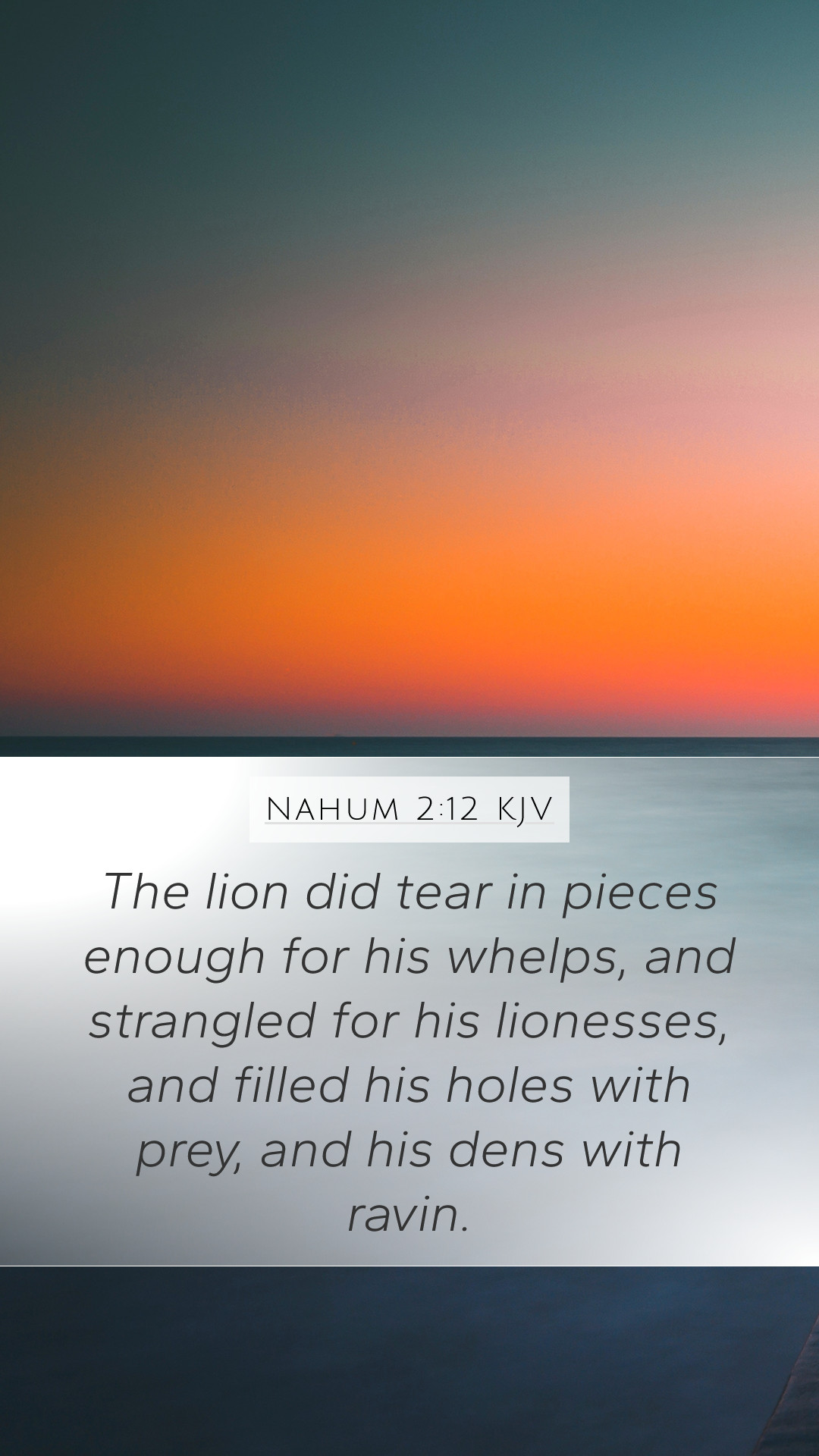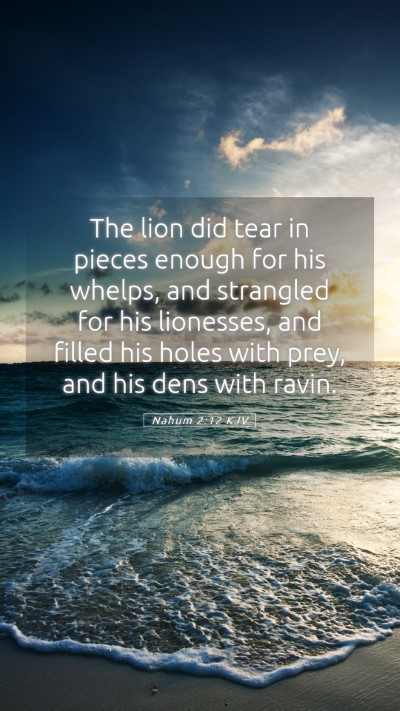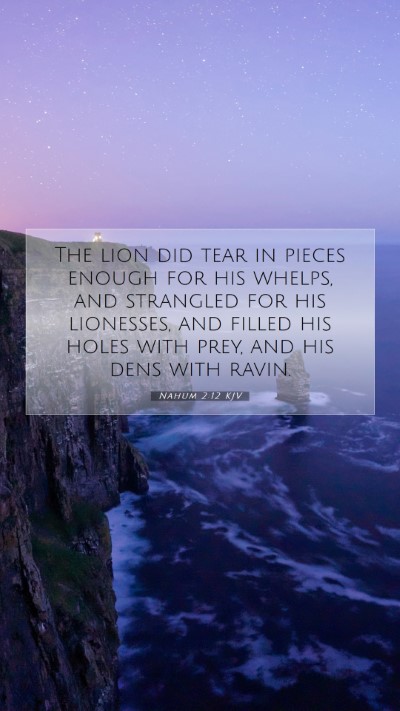Old Testament
Genesis Exodus Leviticus Numbers Deuteronomy Joshua Judges Ruth 1 Samuel 2 Samuel 1 Kings 2 Kings 1 Chronicles 2 Chronicles Ezra Nehemiah Esther Job Psalms Proverbs Ecclesiastes Song of Solomon Isaiah Jeremiah Lamentations Ezekiel Daniel Hosea Joel Amos Obadiah Jonah Micah Nahum Habakkuk Zephaniah Haggai Zechariah MalachiNahum 2:12 Meaning
What is the meaning of Nahum 2:12?
The lion did tear in pieces enough for his whelps, and strangled for his lionesses, and filled his holes with prey, and his dens with ravin.
Nahum 2:12 Bible Verse Meaning
Bible Verse Commentary: Nahum 2:12
Verse: Nahum 2:12 states, "The lion did tear in pieces enough for his whelps, and strangled for his lionesses, and filled his holes with prey, and his dens with ravin." This verse often provokes questions related to its imagery and the deeper message regarding God's justice and judgment.
Understanding Scripture: A Comprehensive Explanation
This verse, embedded in the context of God’s judgment against Nineveh, uses the powerful imagery of a lion— a symbol of strength and dominance. It illustrates how God is conveying the inevitability of destruction that will befall those who engage in oppression and violence.
Exegesis and Analysis
In Nahum 2:12, the reference to the lion emphasizes the ferocity and ruthlessness of the Assyrians, whose greed leads them to consume more than they need. Matthew Henry states that the lion “did tear in pieces enough for his whelps,” indicating that their inhumane dealings not only destroy lives but also ensure the continuation of their legacy of carnage.
Key Insights from Commentaries
- Matthew Henry: Henry reflects on the nature of the lion as a symbol of both the Assyrians and God's judgment. He points out the overabundance of greed that ultimately leads to destruction, urging readers to consider the consequences of their actions.
- Albert Barnes: Barnes highlights the impending doom that enhances this imagery, suggesting that the Assyrians, like lions, have accumulated prey but will soon find themselves being hunted. He emphasizes the inability to escape divine retribution.
- Adam Clarke: Clarke provides an interpretation centered around the divine purpose, reminding readers that even the most fearsome predators will find themselves at the mercy of God's creation. His examination serves as a reminder of the fragility of human power against divine sovereignty.
The Metaphor of the Lion
The lion in this scripture not only highlights the savagery of the Assyrians but serves to contrast with God’s ultimate control over all creational forces. The phrase “filled his holes with prey” suggests a time of plenty that will come to a swift end, and the consequences of sin will ensue.
Practical Applications in Bible Study
Understanding this passage extends beyond intellectual engagement, as these insights can influence how one interprets justice in their own life. Reflecting on how greed and violence can corrupt individual lives and societies provides a moral framework for modern readers. By studying Nahum 2:12, we grapple with the themes of power, accountability, and divine justice.
Cross References for Deeper Study
- Isaiah 31:4: Alludes to the fierceness and inevitability of divine judgment.
- Revelation 5:5: Jesus, referred to as the Lion of Judah, ultimately triumphs, countering the destructive force of the Assyrians.
- Proverbs 28:15: Relates to the nature of wicked rulers and their impact on those around them.
Conclusion
This verse invites readers to ponder the meaning of power, the consequences of greed, and the assurance of God's justice. As we apply these lessons from Nahum 2:12, we develop a deeper understanding of how biblical texts can enrich our lives through reflective study. Whether in bible study groups, online bible study, or personal reflection, the study of scripture through commentaries enhances our comprehension and spiritual growth.


